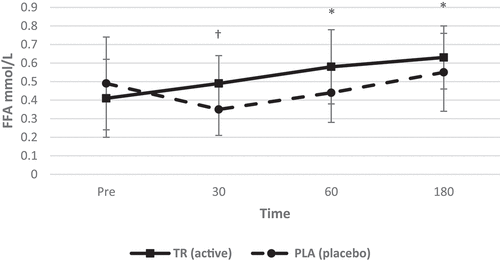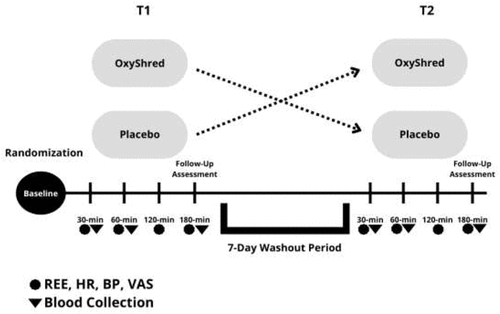Figures & data
Table 1. EHP Labs OxyShred thermogenic fat burner ingredients list
Figure 2. Resting energy expenditure over time. A significant interaction (condition*time) and significant main effects for time and condition were observed for REE. TR ingestion increased REE from baseline to 30, 60, 120, and 180- min while REE decreased in PLA from baseline to at all time points post-ingestion. There was also a significant main effect for condition at 30, 60, 120, and 180 min post ingestion (condition: TR = active; PLA = placebo). *Denotes statistical significance at p < 0.05 for differences from baseline to each timepoint; †denotes statistical significance at p < 0.05 for differences between conditions.

Table 2. Descriptive data for all time points is included for hemodynamic, metabolic measures for TR and PL (data presented as means ± standard deviations).
Figure 3. Volume of expired carbon dioxide over time. A significant interaction (condition*time) and a significant main effect for time was observed for VCO2. TR ingestion increased VCO2 from baseline to 30 and 60 min post-ingestion while VCO2 was significantly higher in TR than PLA at all time points post-ingestion (condition: TR = active; PLA = placebo). *Denotes statistical significance at p < 0.05 for differences from baseline to each timepoint; †denotes statistical significance at p < 0.05 for differences between conditions).
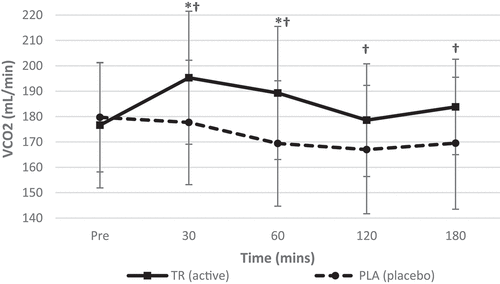
Figure 4. Volume of inspired oxygen over time. A significant interaction (condition*time) and significant main effect for time were observed for VO2. TR ingestion increased VO2 from baseline to 30, 60, 120, and 180 min post-ingestion. There were also significant differences between conditions at all timepoints post-ingestion (condition: TR = active; PLA = placebo). *Denotes statistical significance at p < 0.05 for differences from baseline to each timepoint; †denotes statistical significance at p < 0.05 for differences between conditions.
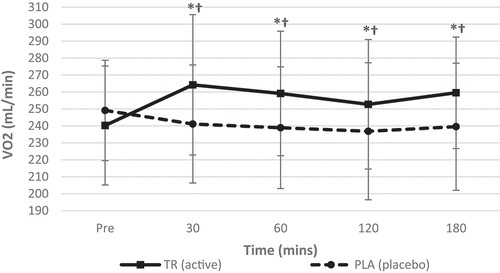
Figure 5. Respiratory quotient over time. No significant interaction (condition*time) was observed for RQ. A significant main effect of time, but no main effect for condition, was observed for RQ. An observed decreased in RQ for both groups was seen at 120 and 180 min post ingestion (condition: TR = active; PLA = placebo). *Denotes statistical significance at p < 0.05 for differences from baseline to each timepoint.
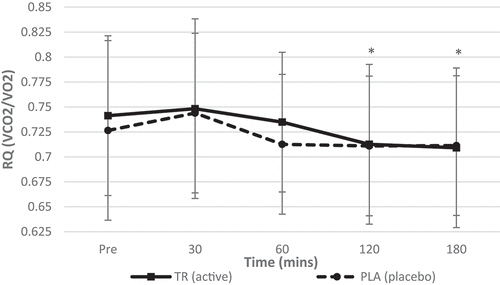
Figure 6. Heart rate over time. No interaction (condition*time) was observed. A significant main effect of time was observed, with follow-up indicating a decrease in heart rate at 30 min post ingestion (condition: TR = active; PLA = placebo. *Denotes statistical significance at p < 0.05 for differences from baseline to each timepoint.
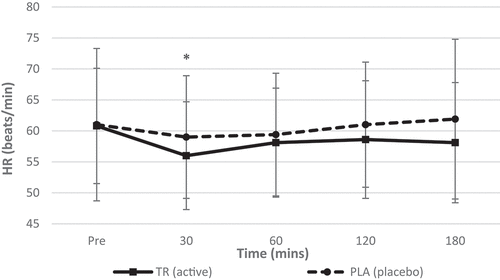
Figure 7. Systolic blood pressure over time. There was no main effect for time; however, there was an observed significant interaction (condition*time) and a main effect for condition for SBP. There were also significant differences between conditions at 60, 120, and 180 min post ingestion (condition: TR = active; PLA = placebo). †Denotes statistical significance at p < 0.05 for differences between conditions.
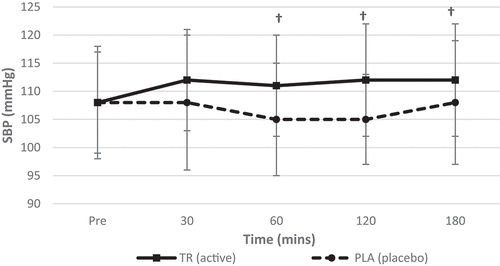
Figure 8. Diastolic blood pressure over time. There was no significant interaction (condition*time) or main effects for time and condition for DBP.
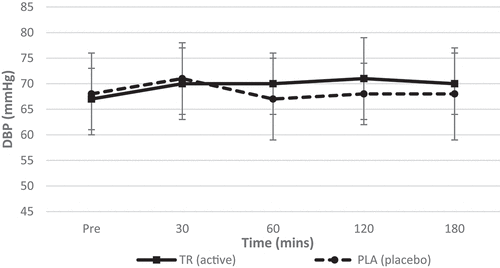
Figure 9. Glycerol concentration over time. A significant interaction (condition*time) and main effect for time for serum glycerol. Glycerol levels were maintained post ingestion of TR, while there was a decrease of glycerol at 30, 60, and 180 min post-ingestion of PLA (condition: TR = active; PLA = placebo. *Denotes statistical significance at p < 0.05 for differences from baseline to each timepoint.
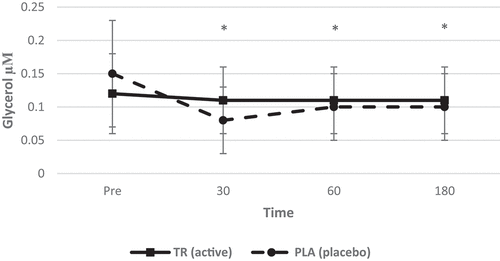
Figure 10. Free fatty acid concentration over time. A significant interaction (condition*time) as well as main effects for condition and time were observed. Free fatty acid levels increased at 60 and 180 min post-ingestion of TR and free fatty acid levels were greater than PLA at 30 min (condition: 1 = TR; 2 = PLA). *Denotes statistical significance at p < 0.05 for differences from baseline to each timepoint; †denotes statistical significance at p < 0.05 for differences between conditions.
